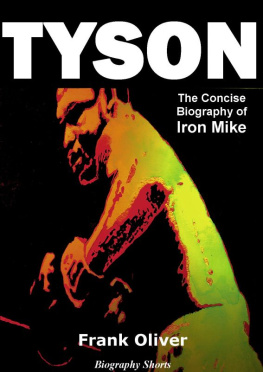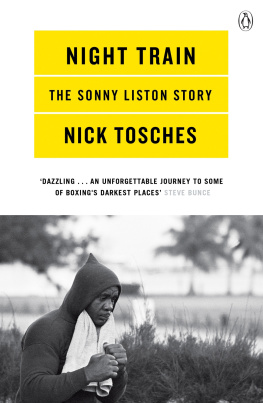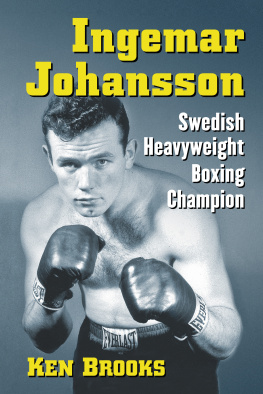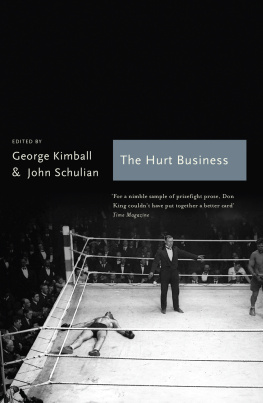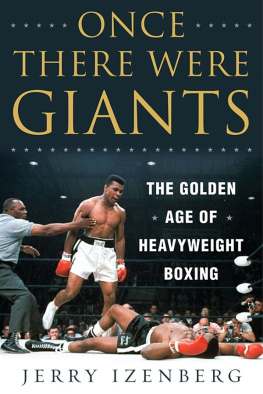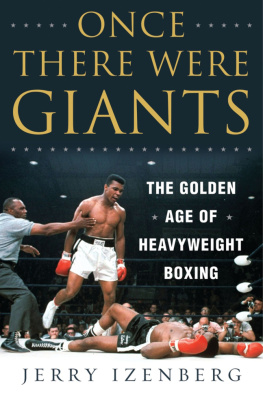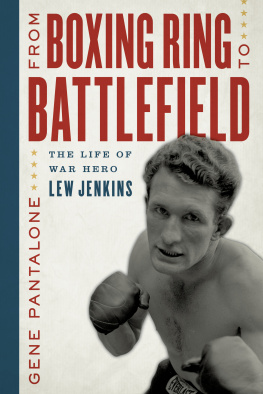Terry and Jan Todd Series on Physical Culture and Sports
Edited by Sarah K. Fields, Thomas Hunt, Daniel A. Nathan, and Patricia Vertinsky
ALSO IN THE SERIES:
Thomas Hunt, Drug Games: The International Olympic Committee and the Politics of Doping, 19602008
John D. Fair, Mr. America: The Tragic History of a Bodybuilding Icon
John Hoberman, Dopers in Uniform: The Hidden World of Police on Steroids
Kevin Robbins, Harvey Penick: The Life and Wisdom of the Man Who Wrote the Book on Golf
Jason P. Shurley, Jan Todd, and Terry Todd, Strength Coaching in America: A History of the Innovation That Transformed Sports

NO WAY BUT TO FIGHT
GEORGE FOREMAN
and the Business of Boxing
Andrew R. M. Smith

UNIVERSITY OF TEXAS PRESS
AUSTIN
Copyright 2020 by the University of Texas Press
All rights reserved
First edition, 2020
Requests for permission to reproduce material from this work should be sent to: Permissions
University of Texas Press
P.O. Box 7819
Austin, TX 78713-7819
utpress.utexas.edu/rp-form
Library of Congress Cataloging-in-Publication Data
Names: Smith, Andrew R. M., author.
Title: No way but to fight : George Foreman and the business of boxing / Andrew R. M. Smith.
Other titles: Terry and Jan Todd series on physical culture and sports.
Description: First edition. | Austin : University of Texas Press, 2020. |
Series: Terry and Jan Todd series on physical culture and sports | Includes bibliographical references and index.
Identifiers: LCCN 2019019899 | ISBN 978-1-4773-1976-5 (cloth : alk. paper) | ISBN 978-14773-1977-2 (library e-book) | ISBN 978-1-4773-1978-9 (nonlibrary e-book)
Subjects: LCSH: Foreman, George, 1949 | Boxers (Sports)United StatesBiography.
Classification: LCC GV1132.F65 S65 2020 | DDC 796.83092 [B]dc23 LC record available at https://lccn.loc.gov/2019019899
doi:10.7560/319765
For Erika, Sophie, and Phoebe
Contents
Prologue
CROSSROADS
This isnt artistic, Howard Cosell told viewers who tuned into ABCs broadcast of George Foreman versus Ron Lyle on January 24, 1976, but it is slugging. As Cosell described these heavyweights trading blows, it escaped him that the artistry was not in the fight but in its production. Two of the hardest hitters in the sport stood toe to toe, landing punches and scoring knockdowns, right inside Caesars Palace. The way the public wants it, Cosell added with a hint of derision, but he was rightand it wasnt a coincidence. This was a carefully planned, made-for-television event designed to provide the public with what it wanted and sow the seeds for the future of prizefighting.
Foreman straddled the sports past and future. Many believed that his best days were behind him, but few could point to a better successor should the current heavyweight champion, Muhammad Ali, follow through on his threats to retire. Foreman had originally signed on to fight Pedro Lovellwho made a bigger imprint on the sport as an actor playing the club fighter Spider Rico in the Rocky saga than he did as a prizefighterat the Las Vegas Convention Center, a nod to Foremans early career, when he traveled around
A pioneer of the opulence that dotted the Las Vegas Strip, Caesars wagered that hosting boxing matches would fill up its rooms while adding to the take not only at its sports book but at the slots and tables as well. Its Roman motif transformed a bout between two desperate contenders for Alis heavyweight championship into a gladiatorial contest. They might as well have worn ox-hide caestus. Every punch came through eight-ounce gloves, thinner than those required in states such as New York or California, and since Caesars Sports Pavilion accommodated only a seventeen-square-foot ring, there wasnt much room to avoid them either. The deck was stacked to ensure more brawling than boxing. A sellout was virtually guaranteed, since seating capacity was limited to about five thousand. The full house and fast action made for a great picture
Cosell described it as a crossroads fight. Both boxers needed a decisive victory in order to stay in contention for a title shot. Another contender for the heavyweight crown, Ken Norton, joined Cosell at the broadcasters table. Both acknowledged Foreman as the favoritebetting fans could get odds of 31 to 51 without leaving the buildingbut they agreed that if Lyle could survive the first five rounds, he was the better bet to win. To their surprise, Lyle jumped out at the first bell and fired off something Cosell described as a wild, almost amateurish right, making it clear that he did not intend to play a long game. Foreman, under the direction of new trainers Gil Clancy and Kid Rapidez, had recently been trying to downplay his reputation as a slugger and prove his merit as a boxer instead. In their prefight banter, Cosell asked Norton whether a fighter like Foreman could change his style to such a degree. In the gym, Norton snorted, before suggesting that after taking a punch, Foreman would likely revert to what he knew best. It didnt take long. Lyle came out of a break with an overhand right that crashed down onto Foreman, followed by hooks and uppercuts that sent him grasping for something to keep him upright. The Houston sports reporter Ralph Cooper saw that Foreman came out trying to box, but after he got hit upside the head, that plan changed: It became a street fight. Cosell screeched that Foreman was in trouble... wobbling back toward his corner, and Lyle tried to keep up the momentum in the next round, opening again with an errant swing. Norton pointed out that Lyle was giving Foreman no respect, just before a three-punch combination led Cosell to warn, That could be a mistake, Kenny. Foreman became the aggressor,
With most scorecards awarding one round to each fighter, the match settled into a pattern. Foreman, ignoring the advice of Clancy, who yelled, Hook to the body! until his voice went hoarse, prodded for an opening to score a big head shot. Cosell reminded his audience that Foreman can end the fight at any time. Lyle could, too. He waited for Foreman to throw those haymakers so that he could land the counterpunches that represented his best weapons. In the fourth round, Foreman overextended himself and Lyle countered with a combination that swung the momentum. Remember how invincible George Foreman looked through forty bouts? Cosell asked Norton and the wider TV audience. What happened to him? Lyle worked himself into a frenzy until he knocked Foreman down. But Foreman jumped to his feet without so much as looking at his corner or the referee. One minute later he delivered a magnificent right that sent Lyle down to one part of the canvas and his mouthpiece to another. Still, Lyle beat the count and got back in the fray, landing a combination that stunned Foreman and following up with a huge right hand. Foreman goes down! Foreman goes down! Cosell cried, recycling a more polished version of perhaps his most memorable boxing call from a few years earlier. But Foreman gets up. Foreman is up. What a fight, Kenny!
As Cosell was bawling his thoughts into the microphone, Foreman told a reporter later there was only one thing running through his mind: Ill be God-damned if somebody is going to knock me out! Once he was considered the savior of the fight game. Now he was on the mat, at the end of a round, in a state where no one can be saved by the bell. Foreman pulled himself up before Charlie Roth could count him out, and staggered back to Clancy. Lyle like
Next page



